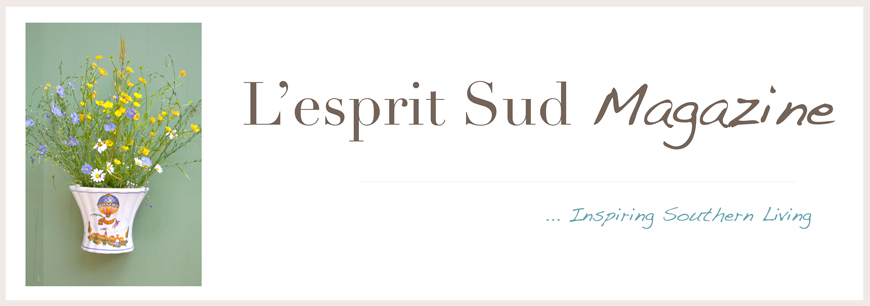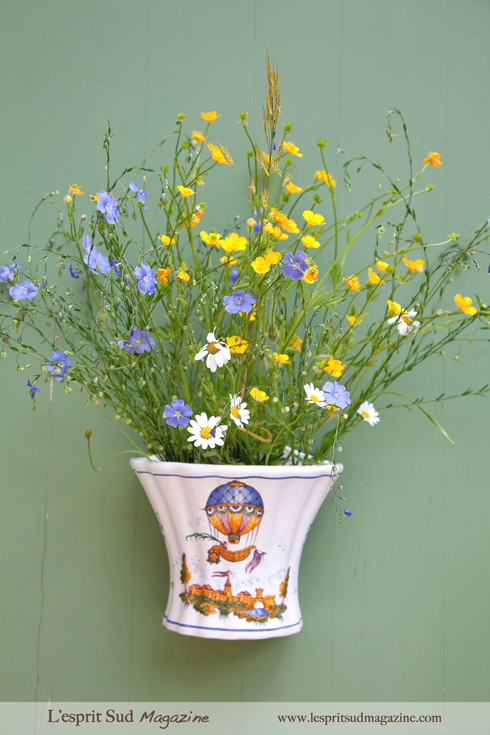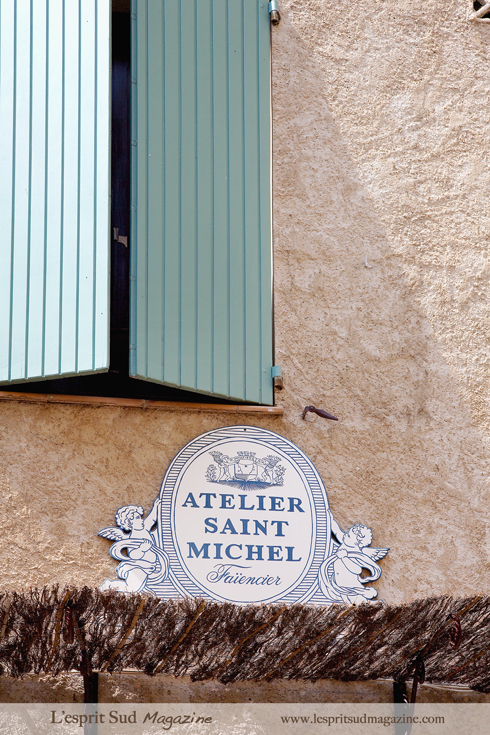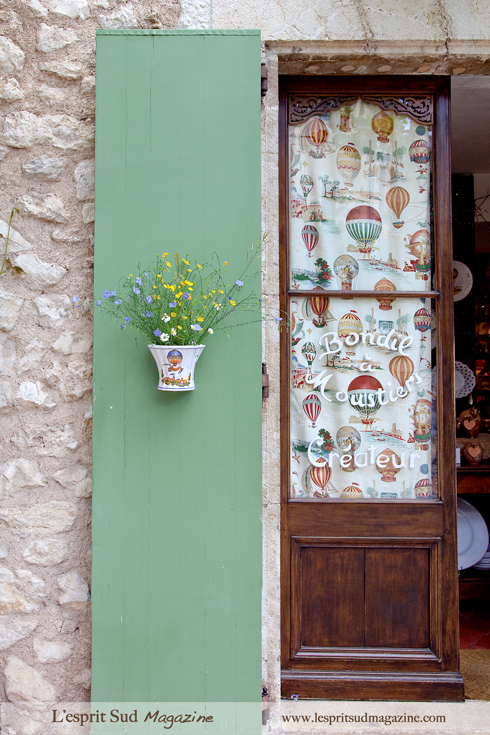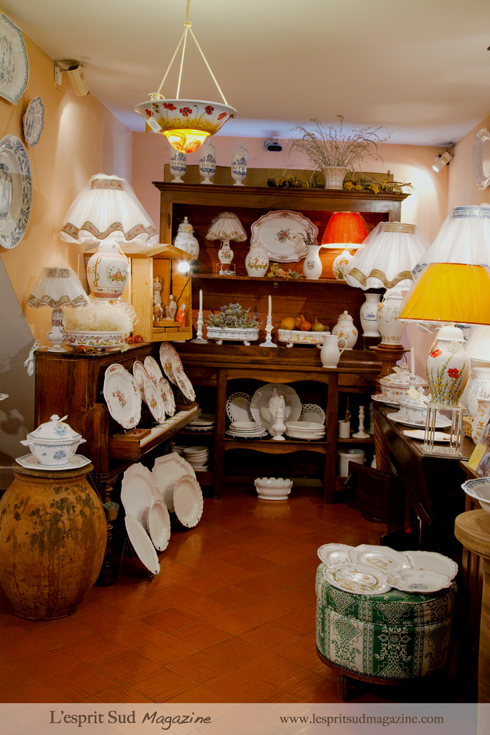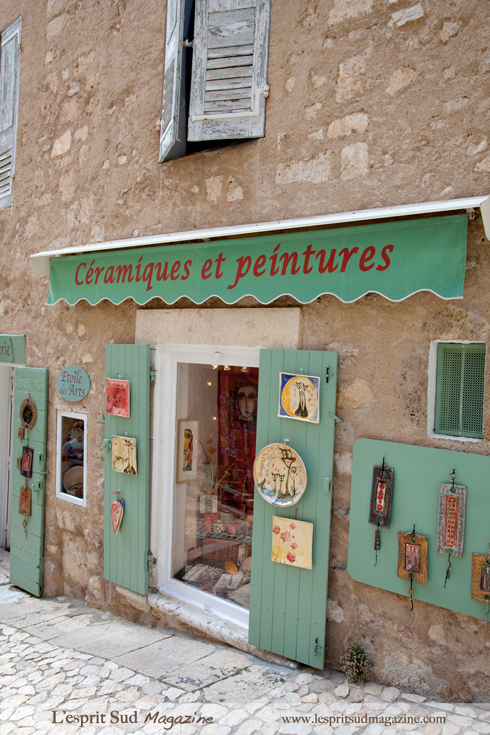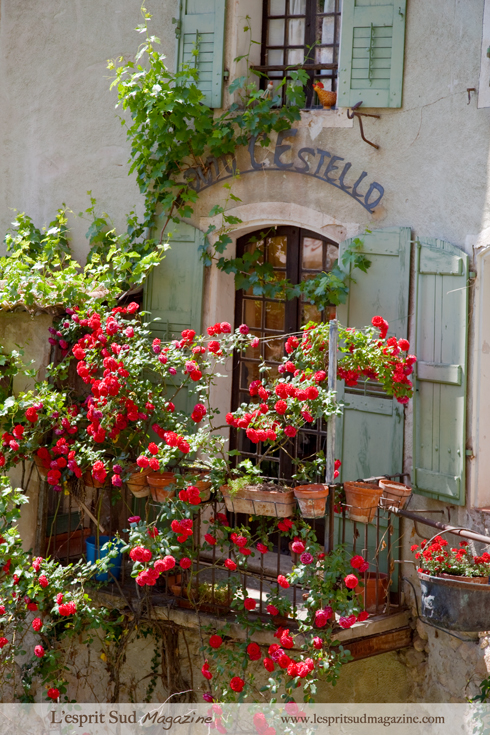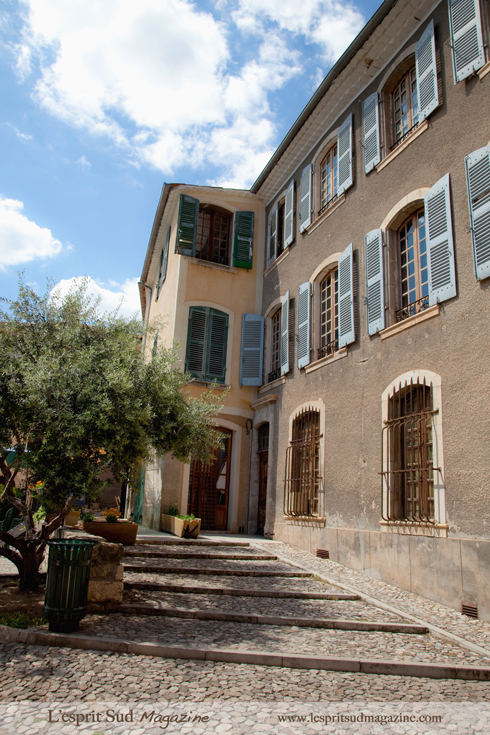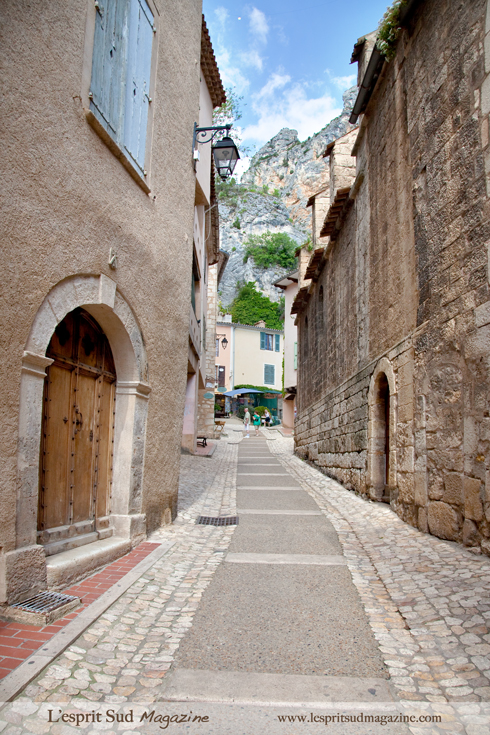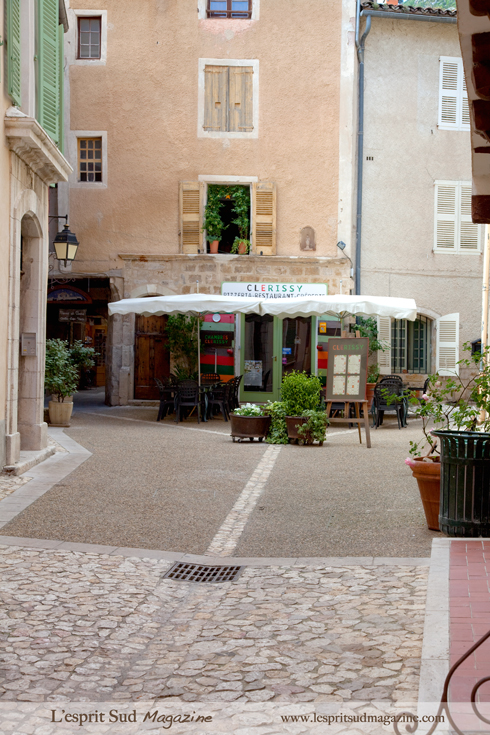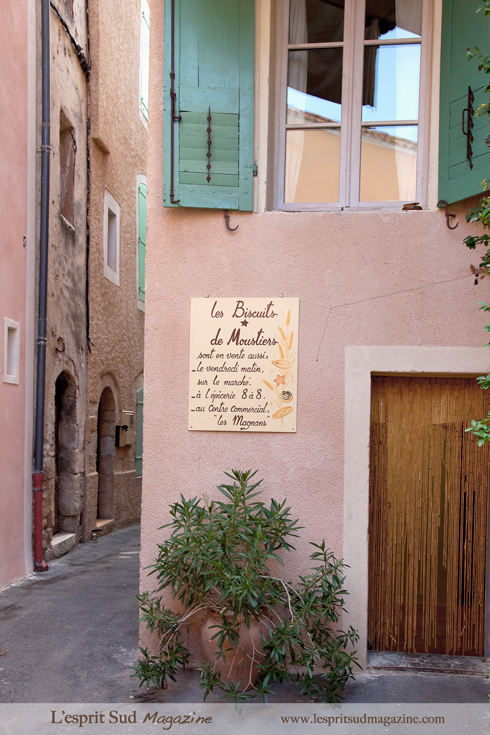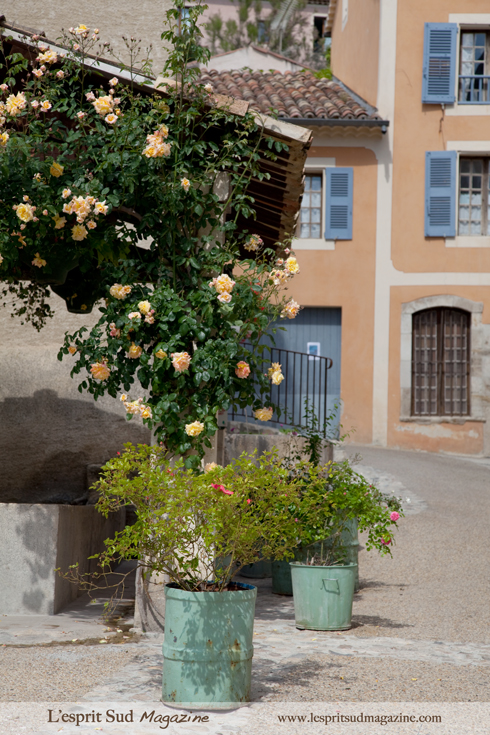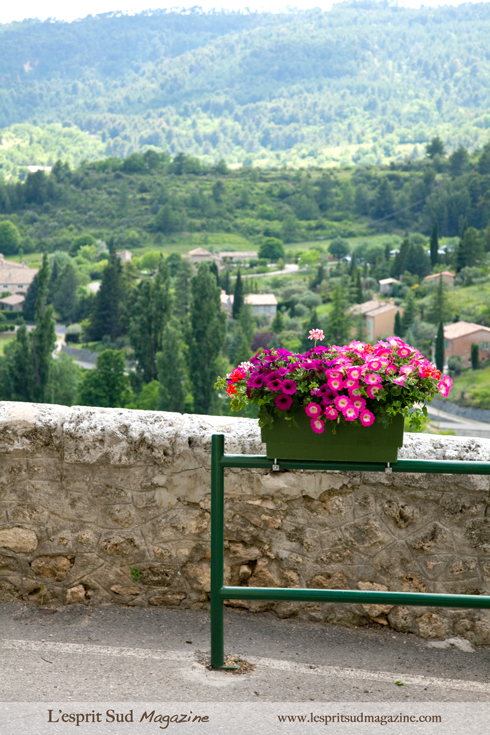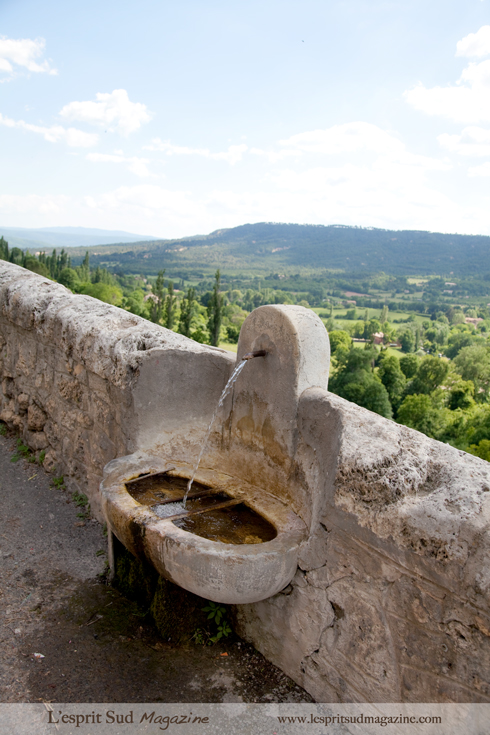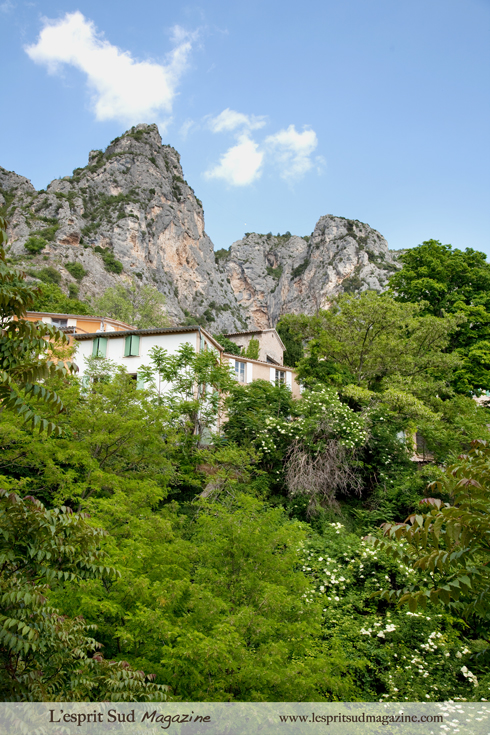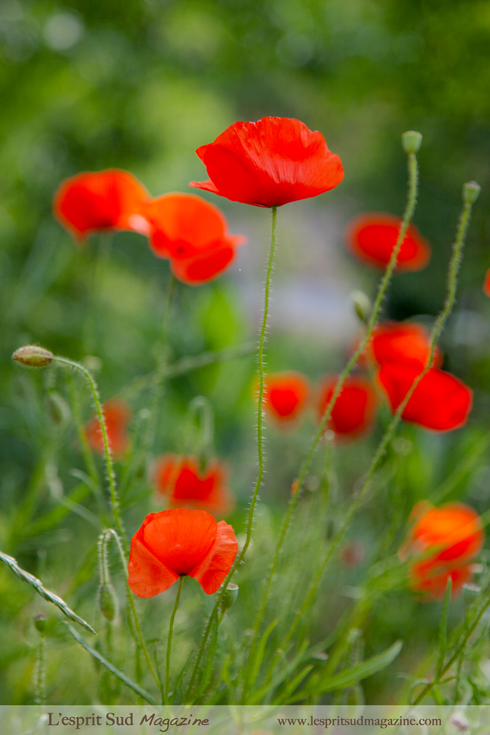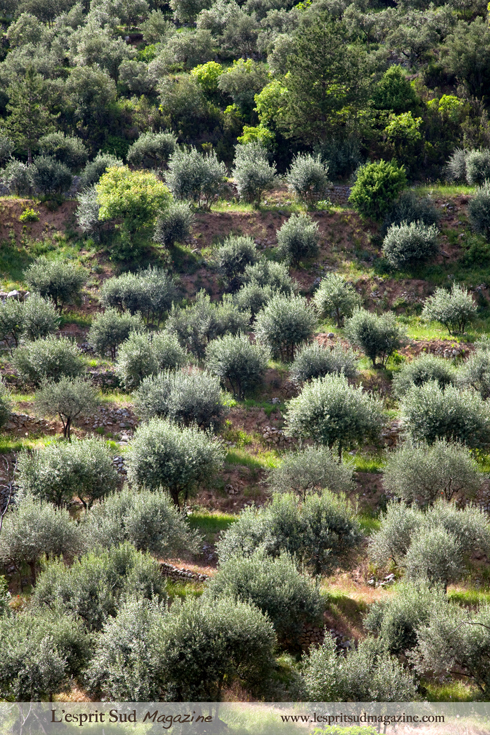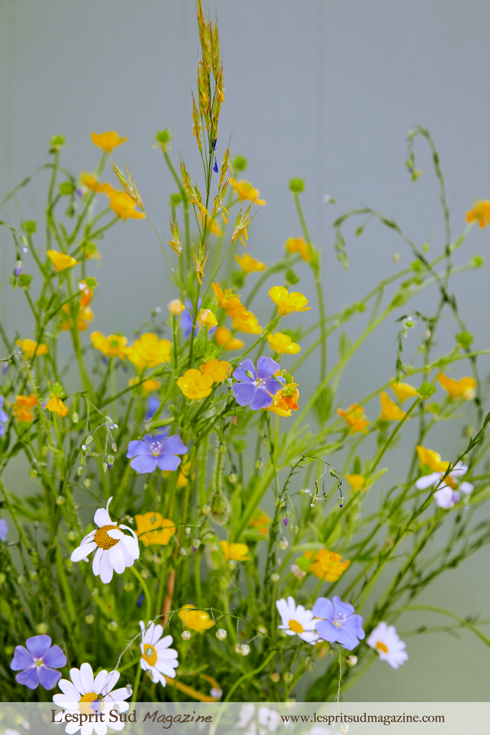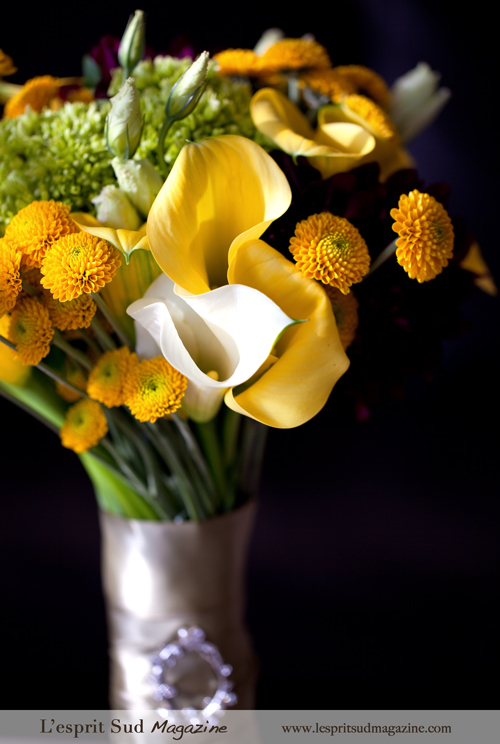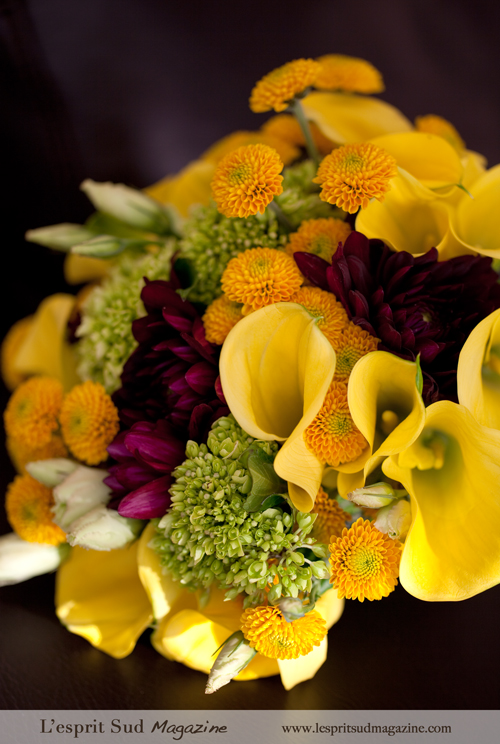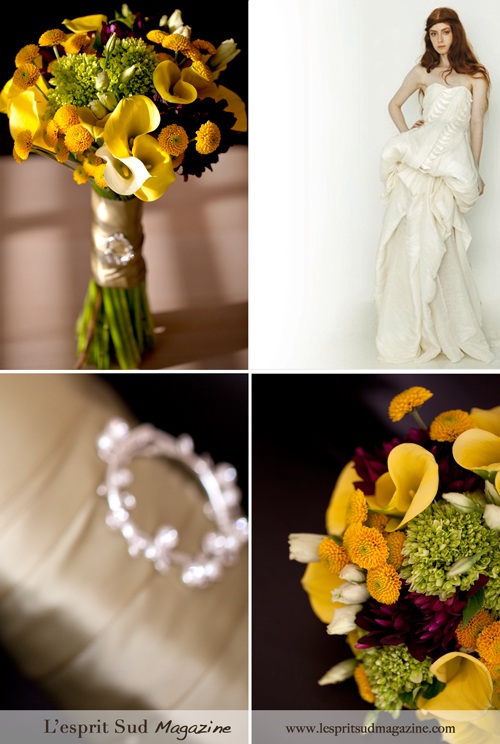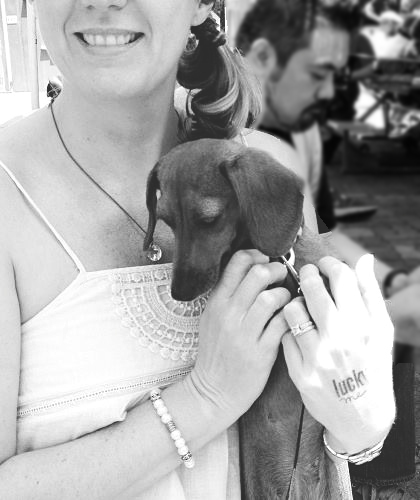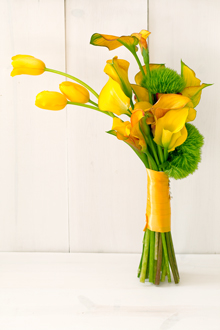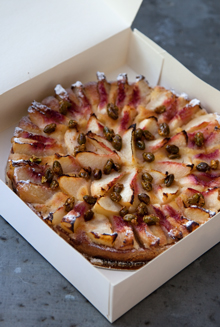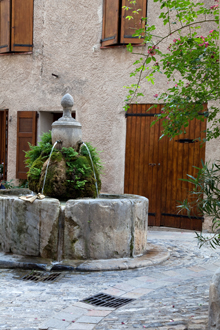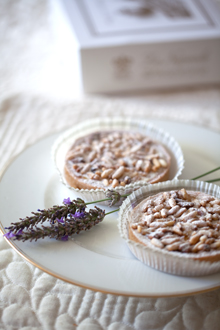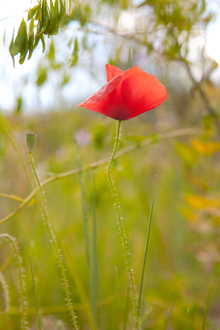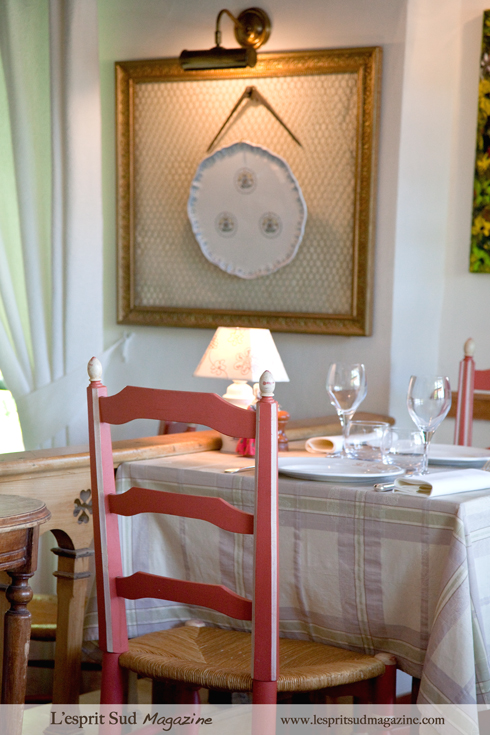
When visiting an amazing place like Moustiers Sainte Marie, it is always crucial to know some good places to eat. As with every touristic place, many restaurants are available around the village but unfortunately, not all are worth a visit. To guide us on our journey, we looked through different guides and reviews to select the place that will best accommodate our needs while prolonging the Provençal experience.
Following a visit of the Bondil’s atelier that manufactures exquisite Faïences (earthware), we reached for Les Santons restaurant, located a few steps away. We were warmly welcomed by Gerd Vigdis, co-owner of the restaurant. (Her Norwegian background may be a true gift for many foreigner tourists that don’t master French … as she can assist you in different languages.) The cuisine prepared by her husband chef Jean Marie Mare, is a collection of heart-warming, “down to earth” Provençal dishes. The restaurant offers a terrace with a terrific view of the village and the river Le Maire, which crosses it, as well as an intimate dining room decorated with exquisite Provençal furniture and accents. At first sight, Les Santons offers the promise of a nice break from the excitement of the visit, especially if you arrive close to the end of the service … as we did.
We took the 3 courses “Menu des Santons” (€38) and were quite pleased. The dishes were well prepared and presented, and the service, efficient and courteous. We wanted an informal but still elegant and tasty place to lunch, and we found it. We appreciated the attention given on the table settings, and the Provençal tableware used. Overall, Les Santons gave us an honest and friendly taste of Provence at a reasonable price tag.
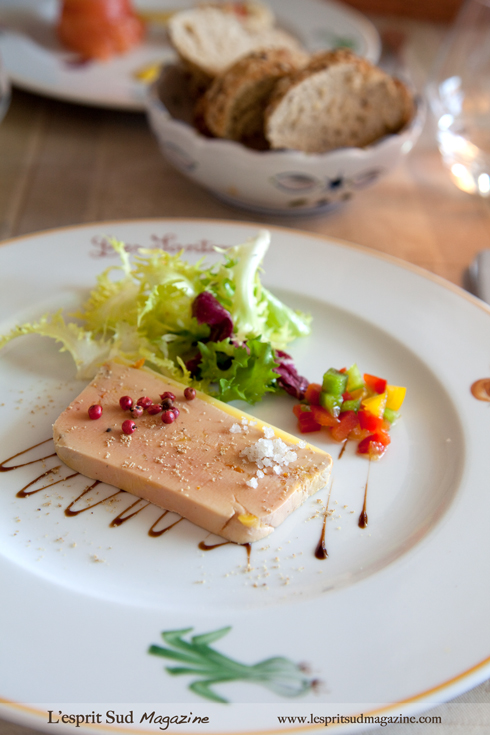
Starter - Terrine de foie gras maison (Homemade Foie gras terrine)
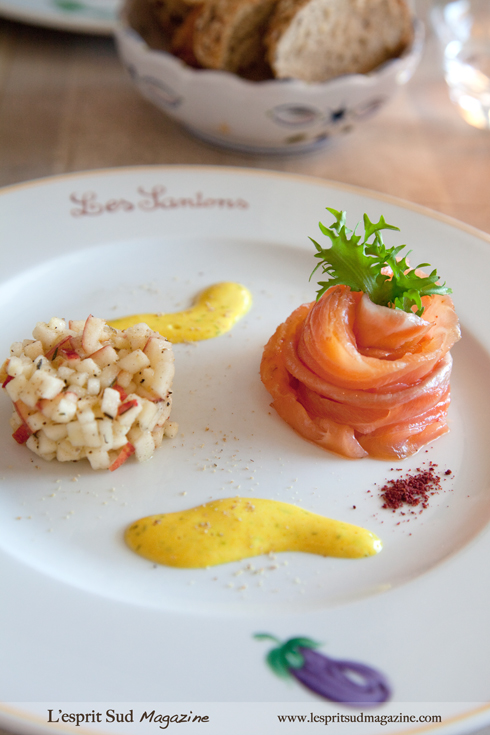
Starter – Saumon fumée (Smoked salmon)

Main dish - Carré d'agneau rôti, ratatouille provençale, poêlée de pommes de terre aux lards (Roasted rack of lamb with provencal ratatouille and pan fried potatoes)
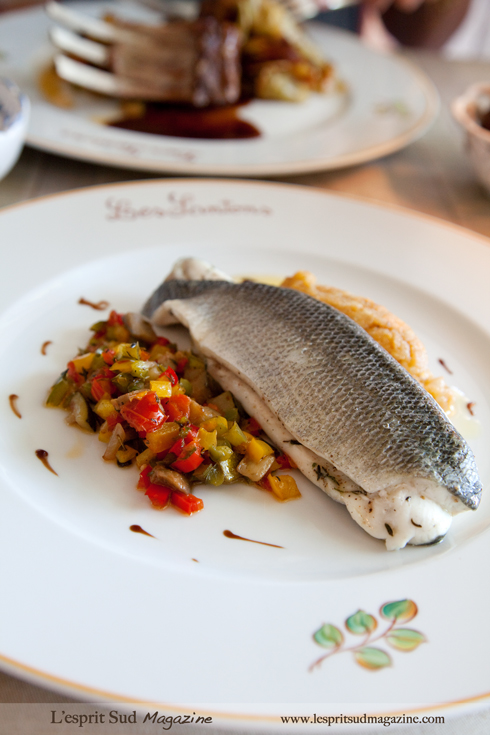
Main dish – Loup de mer, ratatouille provençale (Seabass with provencal ratatouille)
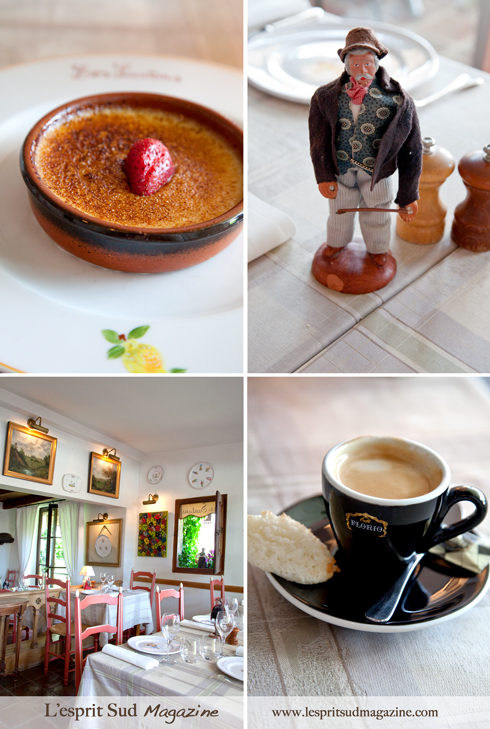
Dessert – Crème Brulée
If you are truly interested in the Provençal culture, the restaurant Les Santons may have something that will interest your curiosity. The little figurines decorating each dining table are called Santons, which now explains where the restaurant derived its name. Santons are small hand-painted, terracotta nativity scene figurines that are exclusively produced in Provence. Every traditional Provençal crèche since the 19th century is composed with these little figurines whose size varies from a couple of centimeters (1 inch) to the most common size of 7-9 centimeters tall (3 – 3 ¾ inches). Larger santons, also called dressed santons, like those found in the restaurant, are typically used for display purpose all year round. Each santon is representing a traditional character that was typically part of a Provençal village of the 19th century like the baker or the shepherd.
Santons are real collectibles and usually handed down within the same family over generations. The most well known santonnier (Santon maker) is the Marcel Carbonel atelier in Marseilles, the santon’s birthplace. Since 1935, four generations of Carbonel have successively been recognized as the best Maitre Santonnier thanks to their excellent craftsmanship, attention to details, and the respect of the traditional Provençal Corps de métiers (trades)*.
If you are a big fan of santons, know that each year since 1803, there is a huge Foire aux Santons (Santon fair) in Marseilles. This year the venue will be located at La Canebière from November 11 to December 31rst 2010.
* To learn more about the santon history as well as how to make a Provençal crib, Marcel Carbonel’s website is a mine of information. See our “For more information” section.

Santon, dinerware and mises en bouche
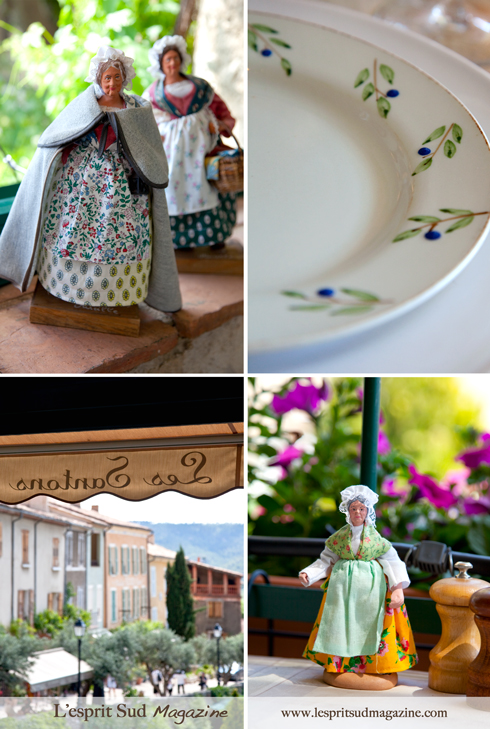
More santons and the view from the terrace
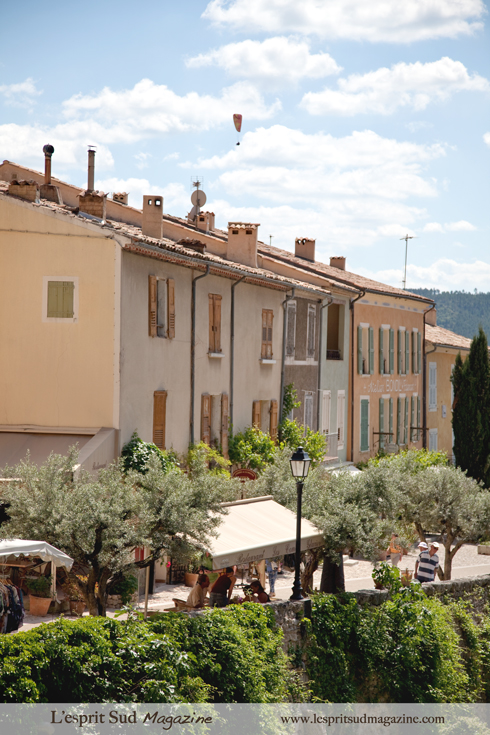
The beautiful vista from the terrace
As we mentioned in our introduction, Moustiers Sainte Marie has a large number of restaurants. Because it is a highly touristic place, it is always advised to know where to go to avoid the unpleasant "tourist trap" experience. For more information on other god restaurant options, please consult the gastronomical table section of our article on Moustiers Ste Marie.
For more information
Les Santons de Moustiers
Open February to November
Place de l’Eglise
04360 Moustiers Sainte Marie
Website and email
A la Carte and menus at €29 and €38 (3 courses) – Our total bill for 2 was €120 including wine, coffee and gratuity. Due to its small size, it is recommended to make a reservation, especially during the high season.
Interactive map
Check out our interactive map of Provence to see where I took all the pictures featured in this article.
